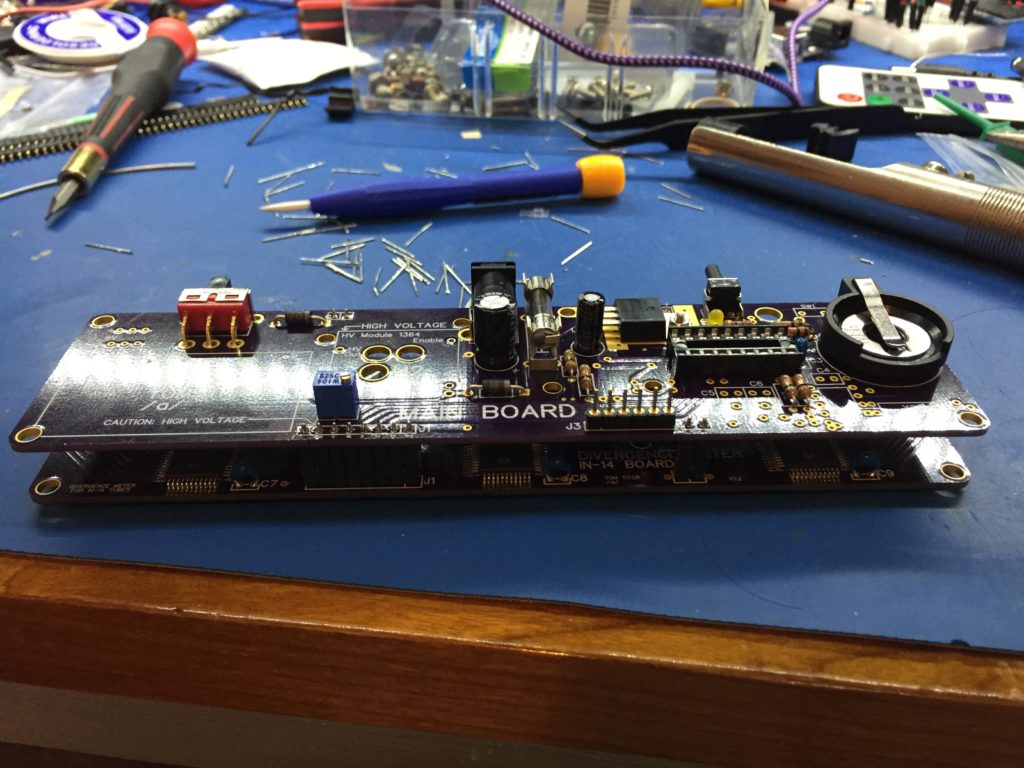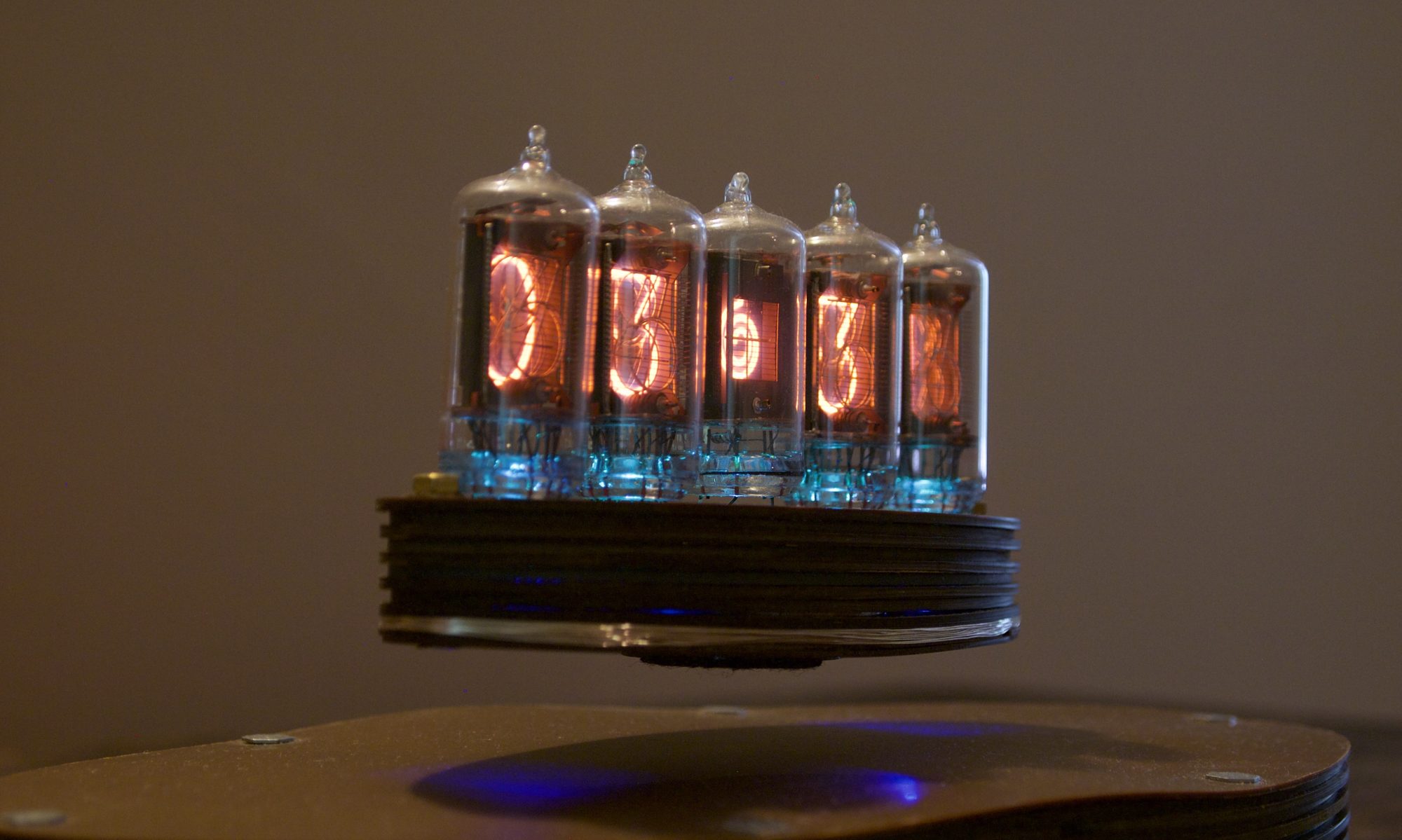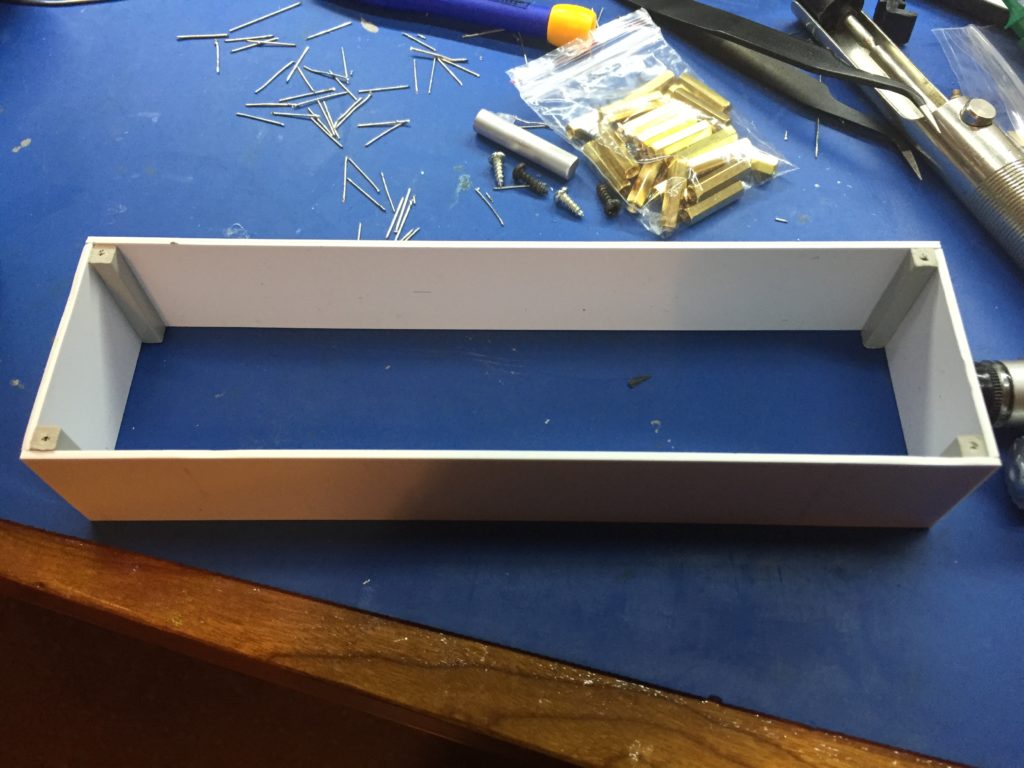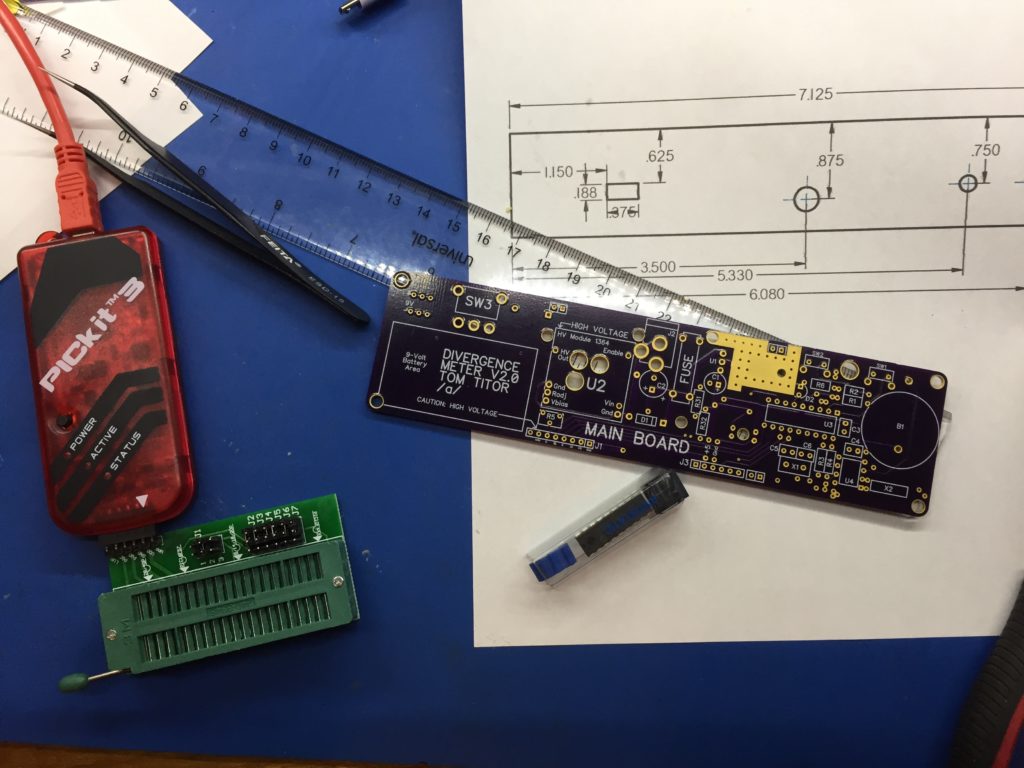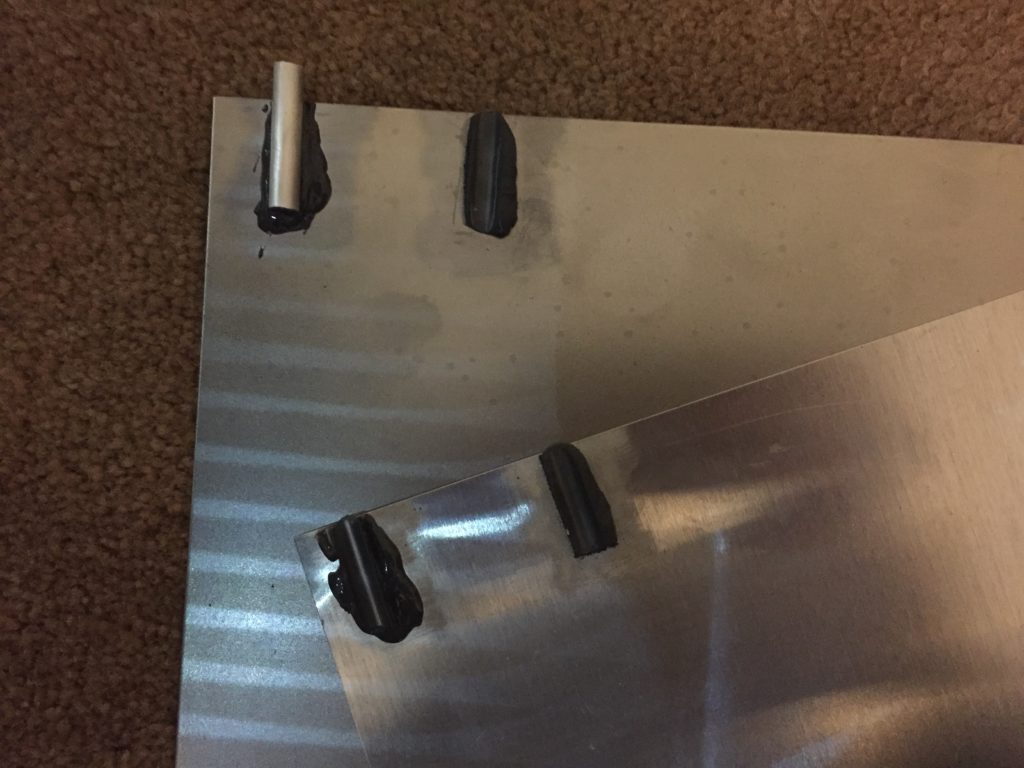Firstly, I only ordered one push-button instead of two. Annoying, but not a big deal.
Secondly, the perfboard had logos printed all over it. No chemical would get them off. Sanding didn’t get them off. When I used a dremel, I discovered the pigment went deep into the substrate. I figured that maybe this was just the particular supplier that DigiKey was using, so I ordered some straight from the public BOM on Mouser. It is exactly the same. So I am down $34 on perfboard I can’t use.
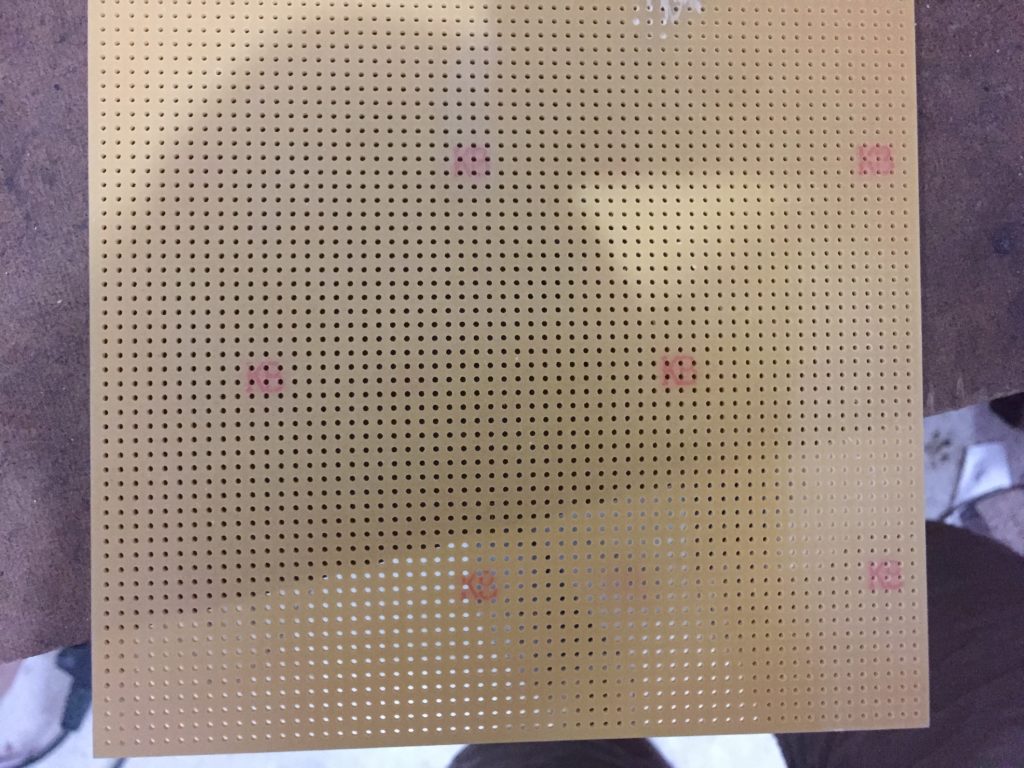
I have ordered yet another perfboard for $23 from DigiKey from a different manufacturer. Hopefully this one won’t be covered in logos. So $57 on perfboard alone. So far!
Thirdly, I missed that the boards on OSH Park need an additional diode near the battery switch. Fortunately I had a suitable Schottky diode lying around.
Fourthly, when I was adjusting the HV it mysteriously stopped working, and the PIC started to get hot. I guess I shorted the HV to the PIC, though I don’t recall doing so. So I am down the HV and the PIC. The HV part is $14. The shipping is $10. So I am now down an extra $60 with little to show for it. Plus I had to unsolder the HV. Fun times!
Since there is little else I can do at this point, I built a prototype case with the styrene sheet. This is so I can test the positioning of the openings on the case before I get some metal ones fabbed.
Anyway, here are the boards, with a gaping hole where the power supply should be 🙁
